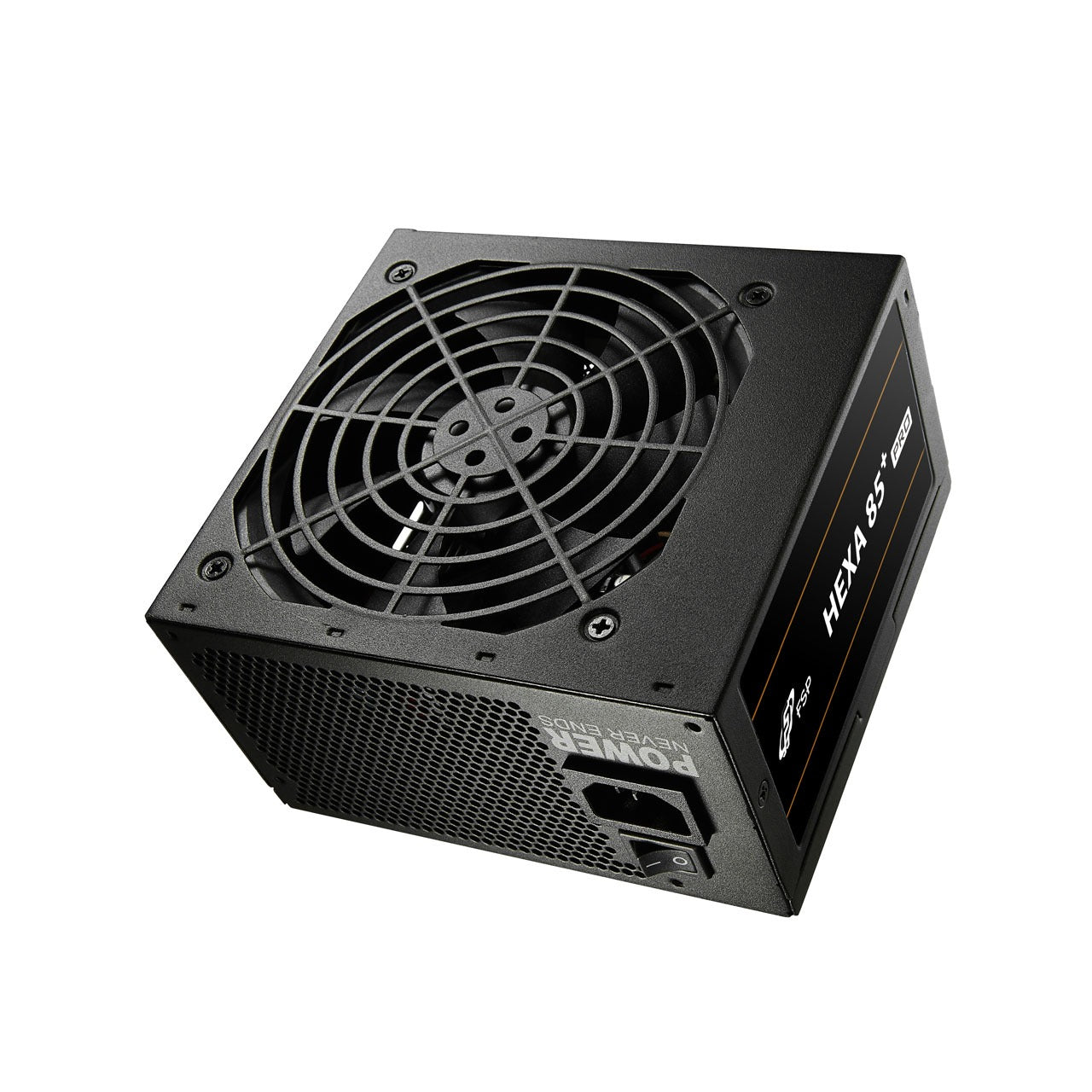
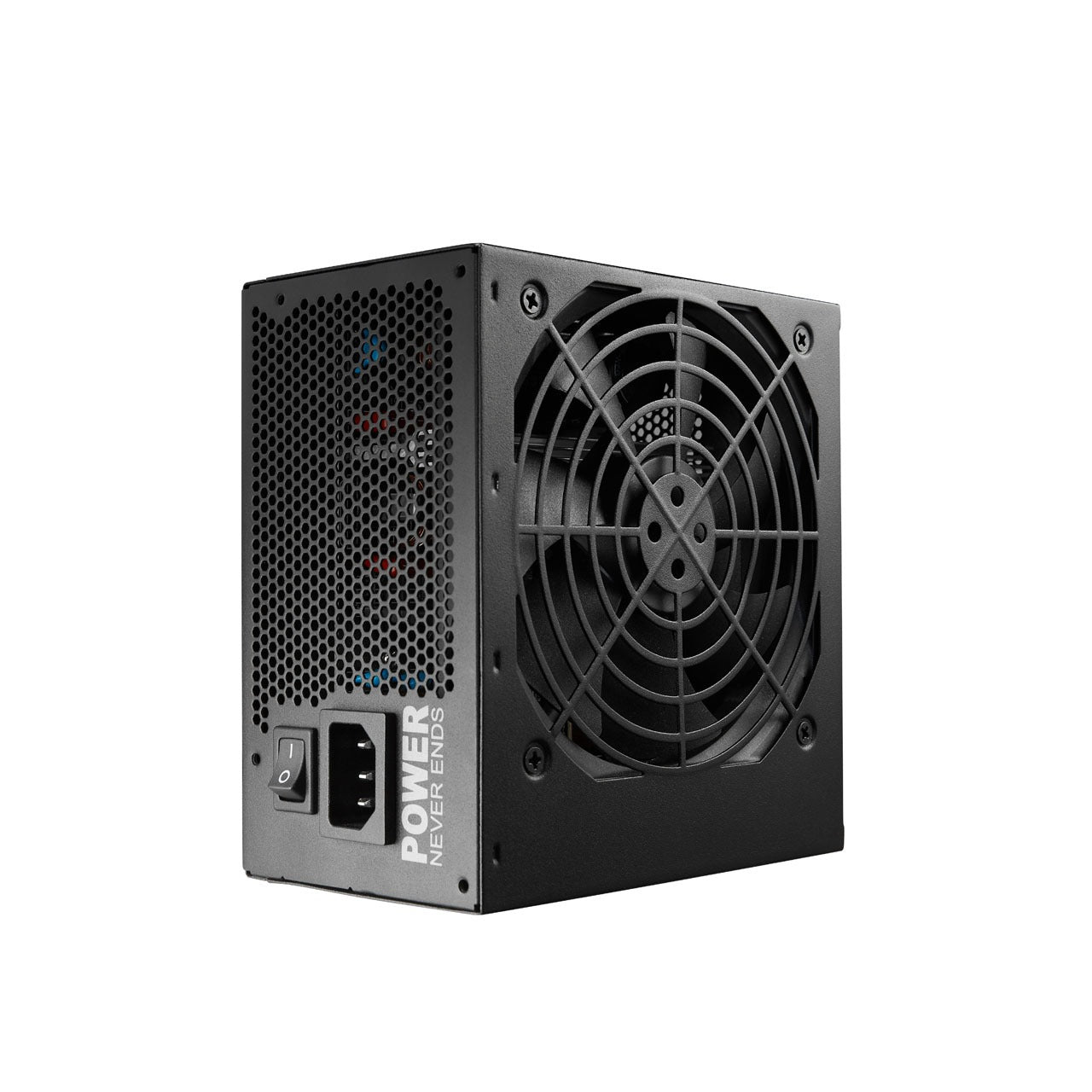
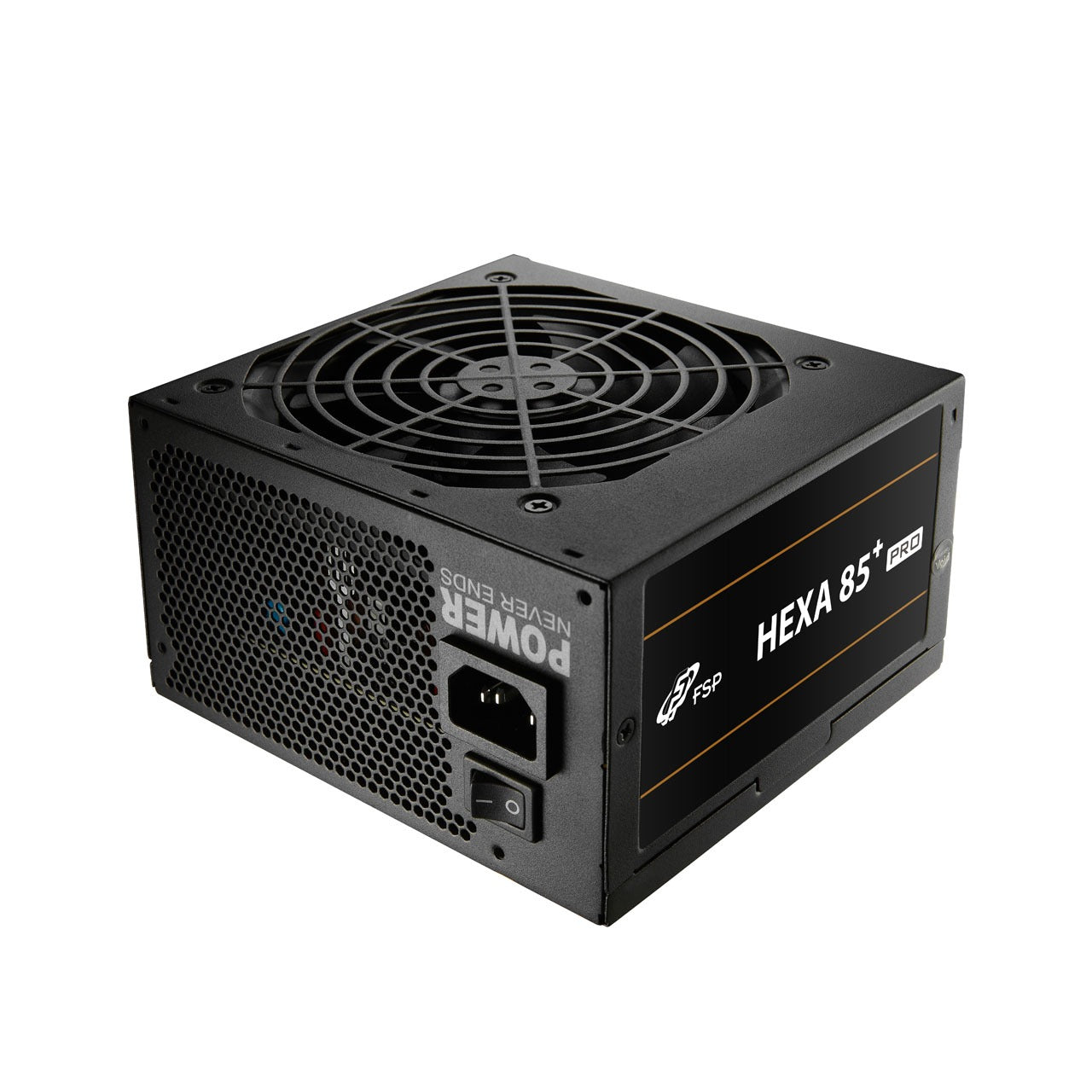
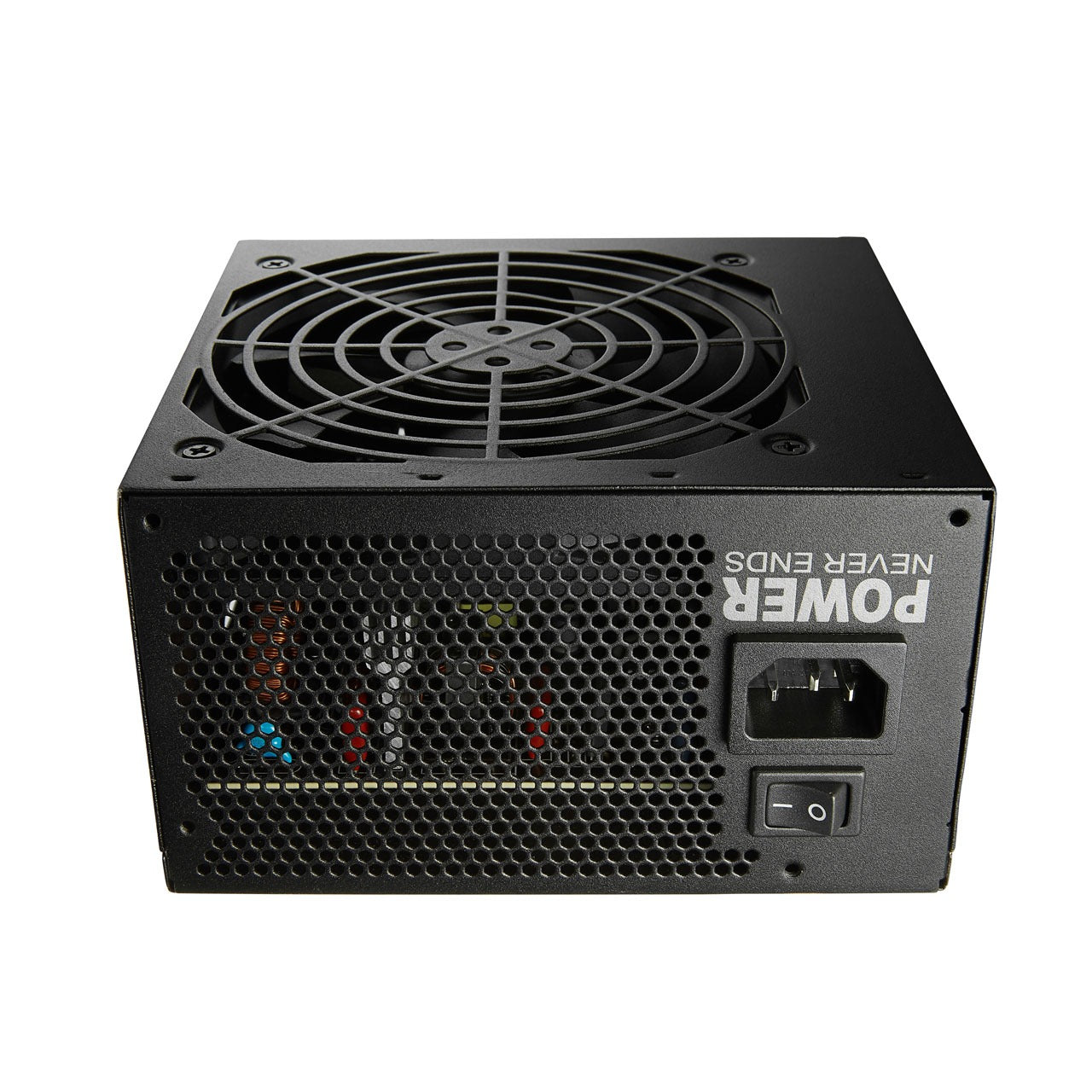
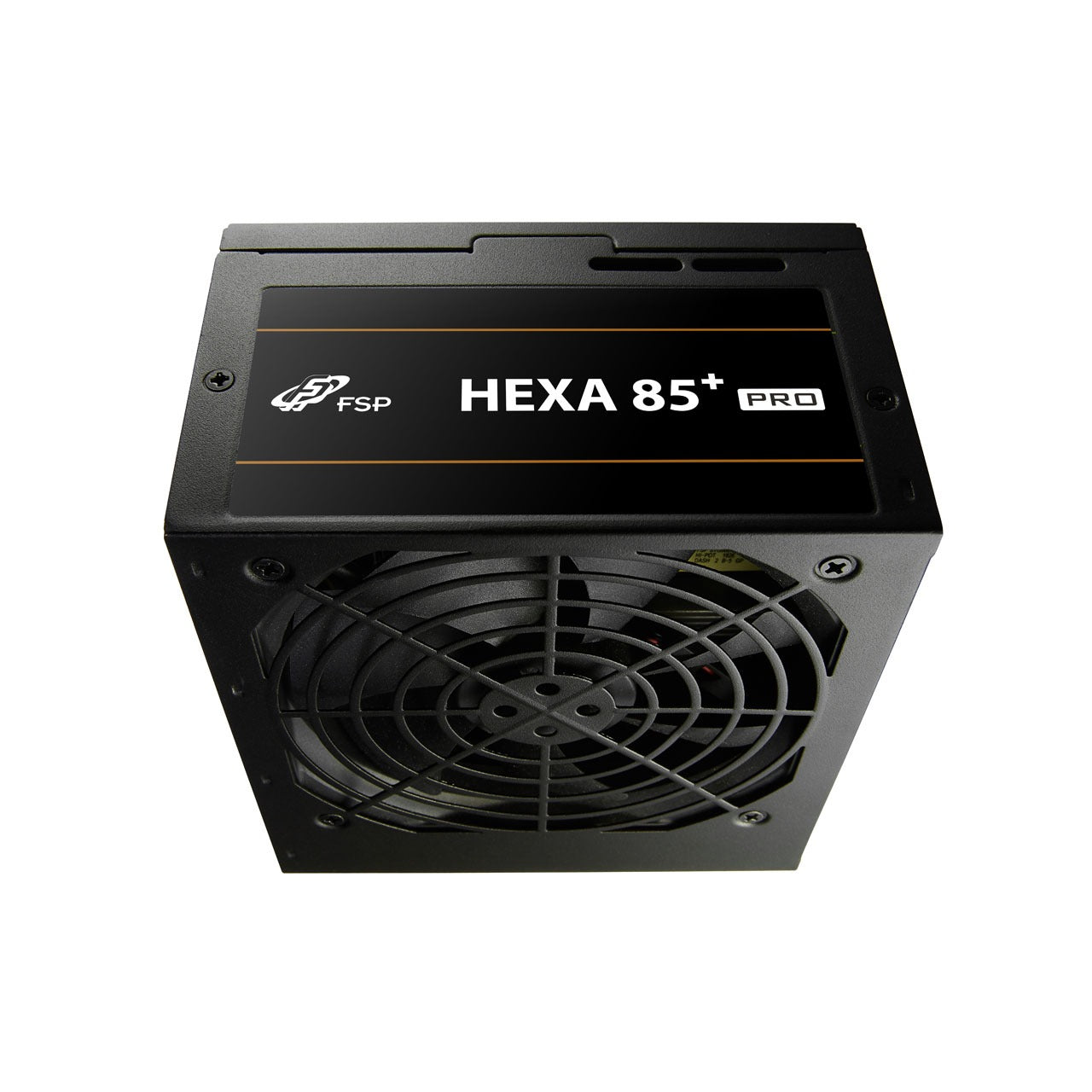
FSP HYPER 80+ PRO 550W Fixed Modular PSU with powercord
- Complies with ATX12 v2.5 & EPS12 v2.92
- Efficiency ≧ 85% at typical load
- Active PFC ≧ 0.9
- Hold up time > 17ms at 80% load
- +12V single-rail design
- Japanese electrolytic capacitors
- +5V&3.3V DC to DC module design
- 120mm silent and long life fan
- Flat black ribbon cables
- Complete protection: OCP/OVP/OPP/SCP
Choose options







80 Plus® 230V EU Bronze Certification
HYPER 80+ PRO series, 80 PLUS® 230V EU Bronze certified, saves energy through its high efficiency up to 88%.

DC-to-DC Module Design
With a 12V SR circuit and the DC to DC structure, HYPER 80+ PRO series ensure you outstanding conversion efficiency and provides stable output voltage.

450V 105C, Heavy-duty capacitor
The bulk capacitor inside serves to support working under an extremely harsh environment, such as with high temperatures, peak voltage fluctuations. It stabilizes the performance for high reliability that your system can count on.
Energy Related ErP/Eup 2013
Green Power! The total AC power consumption of the completed system is less than 5Vsb rail to support the new EU Regulation ErP 2013 for modern day systems.
Keep in Compliance IEC 62368
FSP Group provides a full kinds of additional safety approvals to keep designs ahead of the changing regulations. FSP has upgraded the majority of power supplies to the new IEC 62368 standard for your gaming rigs.

All Black Coating and Cables
The mat black coating and flat cables give your system a superior look and straightforward rather so many entry-level power supplies.

For gaming enthusiast, the HYDRO PRO 700W features with dual CPU power connectors to support high-end motherboard and provide CPU stable power.
Intelligent Fan Speed Control
An advanced thermal control fan makes optimal cooling and reduces noise under maximum operation.

120mm fan and heat dissipation design to spin quietly and keep cooling under maximum operation.
All Black Round Cables
The all black coating round cables give your system a superior look rather so many entry-level power supplies.

For gaming enthusiast, the HYPER 80+ PRO series features with dual CPU power connectors to support high-end motherboard and provide CPU stable power.

Cables






| / | MB 24 PIN | CPU 4+4 PIN | PCIe 6+2 PIN | SATA | Molex | Floppy |
|---|---|---|---|---|---|---|
| Connectors | 1 | 1 | 2 | 5 | 2 | 1 |
AC/DC
| AC Input | 200-240Vac~ 4.5A 50-60Hz | / | / | / | / |
|---|---|---|---|---|---|
| DC Output | +3.3V | +5V | +12V | -12V | +5Vsb |
| Max Output Current | 16A | 16A | 45.8A | 0.3A | 2.5A |
| Max Combined Power | 85W | 85W | 549.6W | 3.6W | 12.5W |
| Total Power | 550W | / | / | / | / |
Specifications
| Model | H3-550 |
|---|---|
| Rated Output Power | 550W |
| Form Factor | ATX12 V2.4 |
| 80 PLUS Certification | 230V EU Bronze |
| Input Voltage | 200V-240V |
| Input Current | 4.5A |
| Input Frequency | 50-60Hz |
| PFC | Active PFC |
| Efficiency | ≥88% at typical load |
| Fan Type | Sleeve Fan, 120mm |
| Dimensions(L x W x H) | 150 x 140 x 86 mm |
| Weight | 1.255 kgs |
| Protection | OCP, OVP, OPP, SCP |
